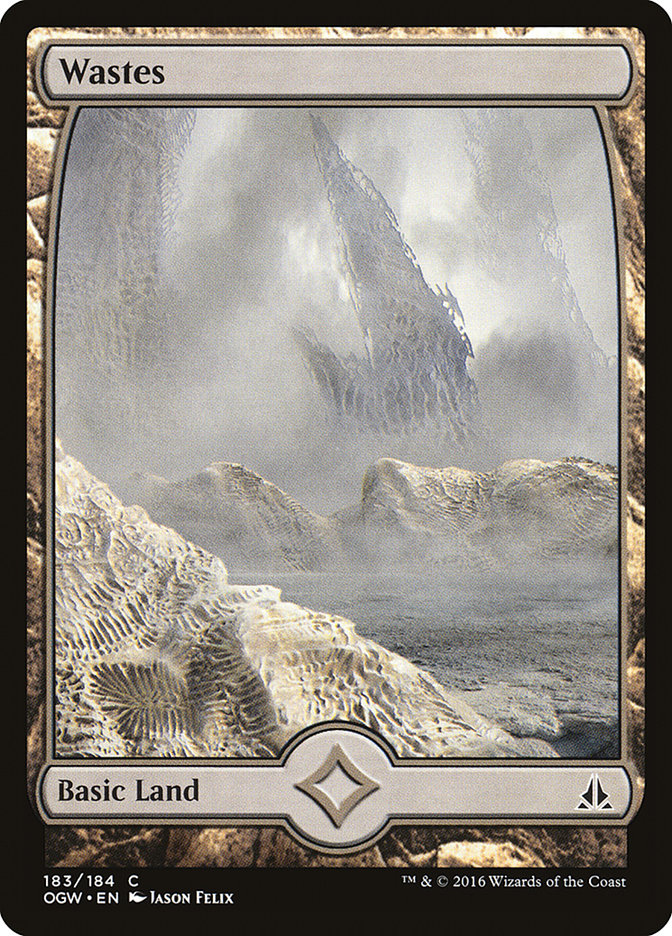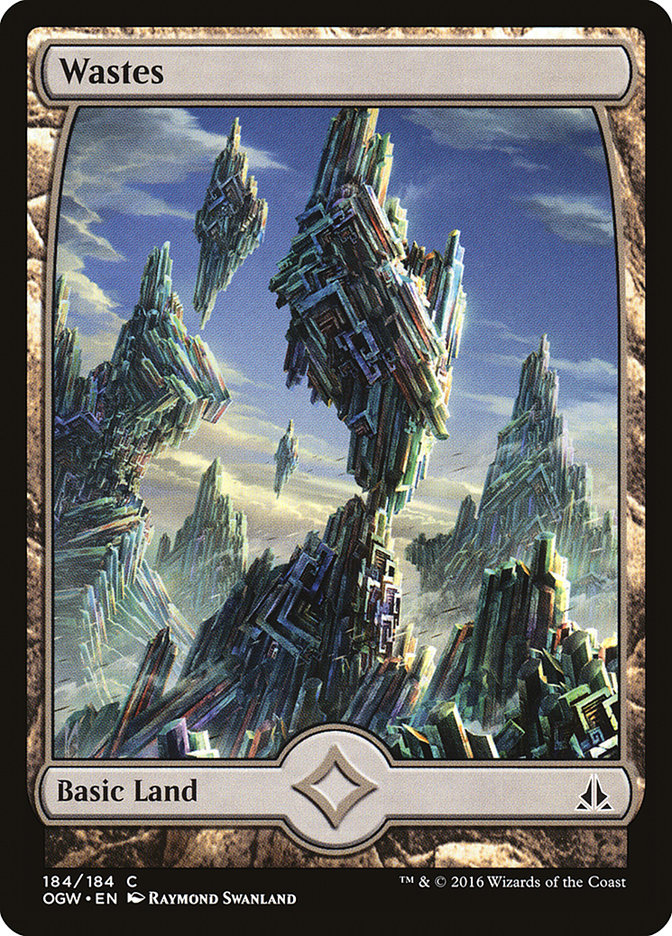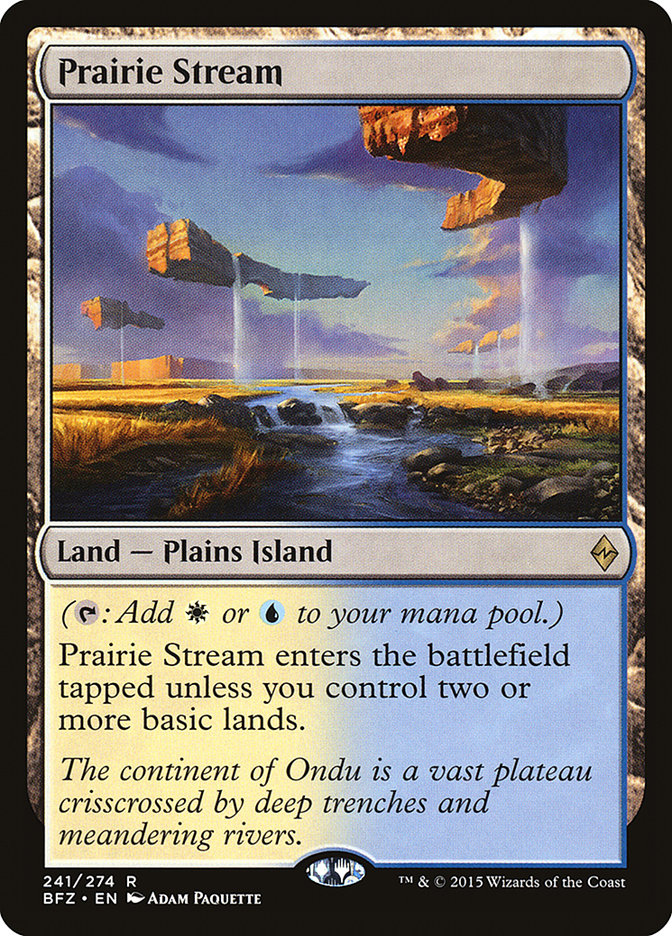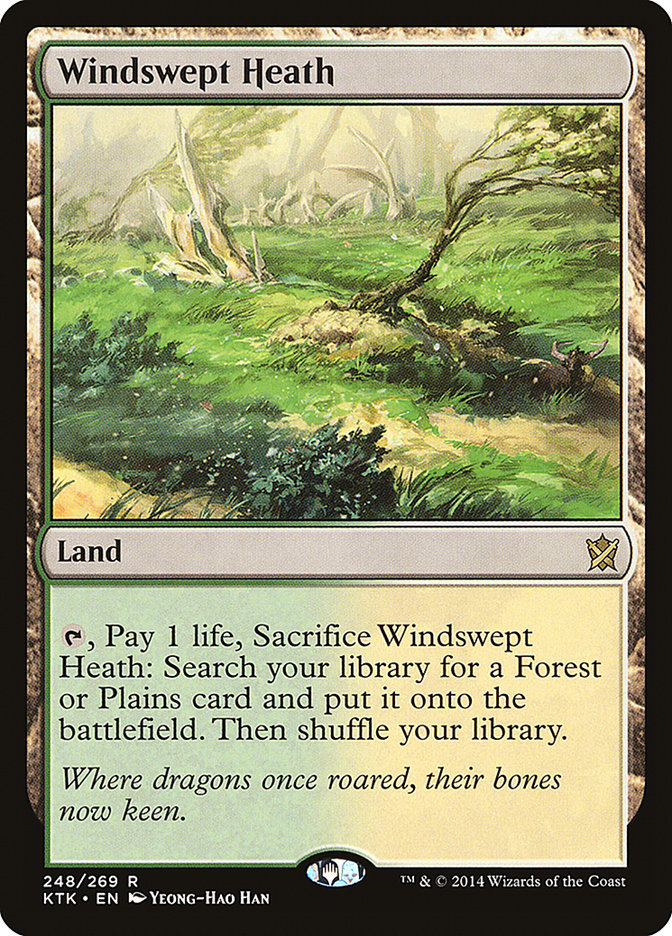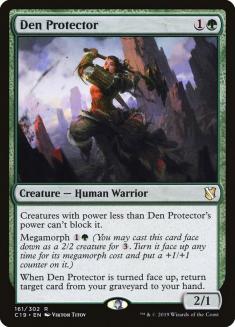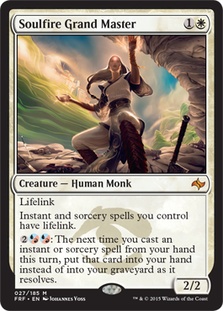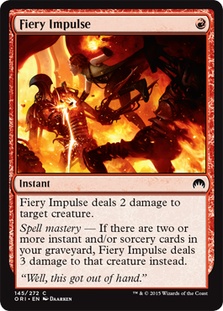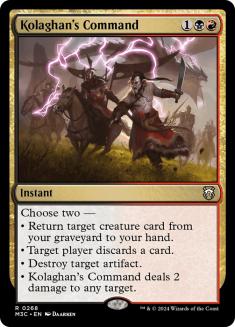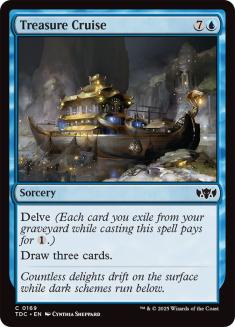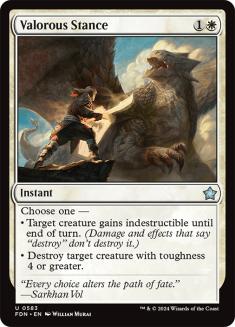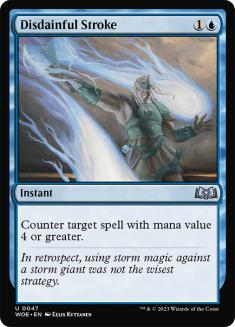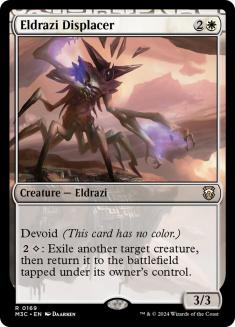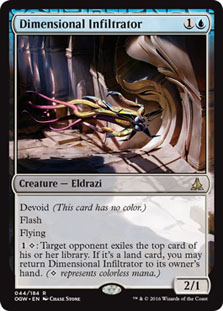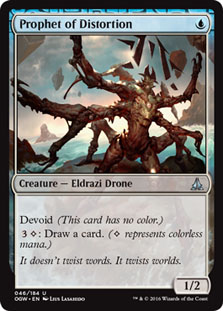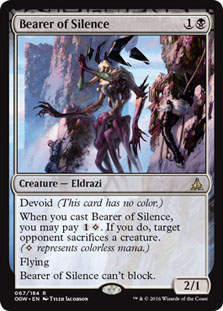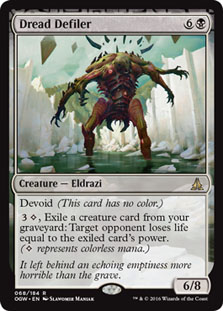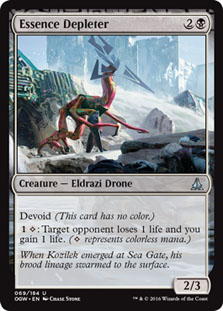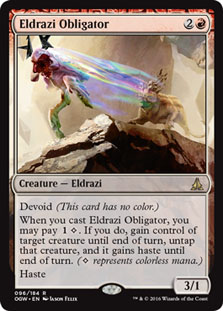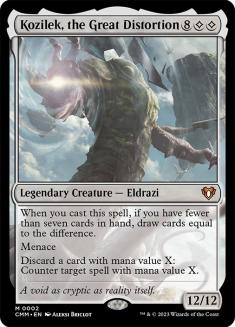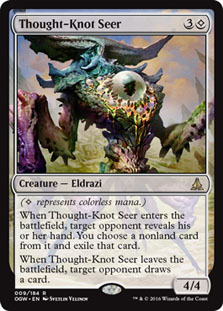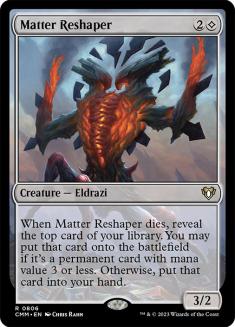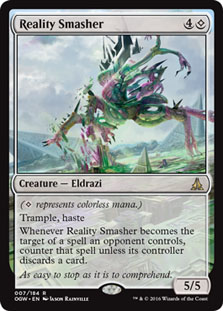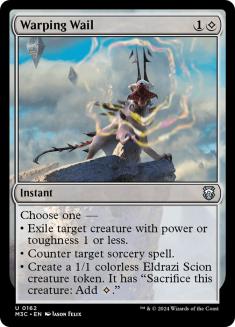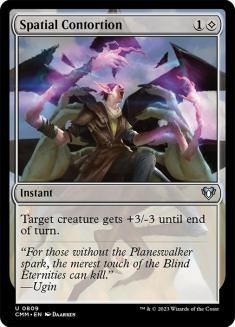To my mind, colorless mana is the most exciting thing coming out of Oath of the Gatewatch, and it opens up some huge questions about what Standard will look like in the future.
There are almost no decks in Standard that can currently use any cards with diamonds (or wingdings, or whatever you want to call the new colorless mana symbol) in their mana cost or as a cost for an activated ability. These cards won’t just slot into existing decks, but they’re so powerful that I think they’ll force the world to change to include them. The question of how and what that will look like is huge.
Manabases these days revolve around the Battle for Zendikar Battle lands with fetchlands to find them and basic lands. Having played Blighted Woodland in Bant Tokens, I know that adding just a few other nonbasic lands can wreak havoc on getting untapped lands with your fetches to make this kind of manabase function smoothly. Slotting eight or more colorless lands into a deck based around fetching Battle lands is going to cause a lot of problems.
I’m delighted by the possibility of the format offering a wide range of basic ways to approach building a manabase, but before we get into building for the new world, I want to briefly touch on something that happened this weekend.
The Curious Case of 64 Cards
In what was essentially the last week of the current Standard format, Ben Rubin may have revolutionized the way we approach fetchland manabases in Standard. He played a 64-card deck with sixteen fetchlands. By doing this, he slightly decreased his chance of drawing any given spell, but he also substantially increased the chances of drawing a card that fixed his mana while allowing himself plenty of room for the building blocks, the basic lands and Battle lands that he didn’t want to draw, but wanted to be able to fetch. Essentially, in exchange for drawing Siege Rhino very slightly less often, he gave himself better mana than a 60-card deck can have.
My intuition has always been that there have been lots of times, especially when there were a lot of ways to search your library, where playing a few more than 60 cards was right, but it’s very hard to do, to convince others to try, to reconfigure the math on what it all means, and just to build a deck without the constraint of figuring out exactly 60. In a way, it felt like there was a gentlemen’s agreement to play exactly 60 cards, just to simplify deckbuilding enough that we could possibly parse it all. Tearing that down explodes our number of options, and I really don’t think any single card is so great that the cost of decreasing its frequency comes close to outweighing the benefit this approach offers to the mana. I don’t just think Rubin’s approach was acceptable in this corner case, I think it might just be the future of building four-and five-color decks around a fetchland mana base.
Consider the five-color deck from my recent videos.
Creatures (17)
- 4 Mantis Rider
- 4 Siege Rhino
- 1 Tasigur, the Golden Fang
- 3 Den Protector
- 4 Jace, Vryn's Prodigy
- 1 Oblivion Sower
Lands (25)
Spells (18)

That deck has sixteen fetchlands and nine lands that it can fetch. If you increase the ratio of fetchlands to fetchable lands, you make the mana better, as you’re more likely to draw a land that gives you access to any of four colors instead of only one or two colors, but you can only go so far because you need room for all the lands you’re trying to find, and you need enough that you don’t run out of lands over the course of the game. As is, the deck can only have nine mana sources in play at a time, which is a restriction that can definitely come up. If you added one more fetchable land and four more fetchlands, you’re more likely to have the right colors of mana for your spells early and you’ll have more options when fetching going later into the game. That’s five additional lands, which would require adding seven more spells to keep the ratio the same. If I added, for example, a Den Protector, a Soulfire Grand Master, a Fiery Impulse, a Kolaghan’s Command, a Treasure Cruise, a Valorous Stance, and a Disdainful Stroke, just off the top of my head, I don’t think I really disrupt what’s going on–my curve is similar and my plan is similar, and none of those cards are much worse than what I’m doing; many of them are already in the deck.
The biggest downside to this, and the primary reason I never pull the trigger, is that it hurts you a lot in sideboarding. Your sideboard can’t get larger, so you’re able to change a smaller percentage of the cards in your deck, which just means you get to adjust less, but it’s easy to imagine that the payoff to your mana completely outweighs the cost to sideboarding, especially on the smaller end, going to 64 cards rather than 72.
Note that, because that’s playing the full twenty fetchlands, unless you want Evolving Wilds, your mana gets worse after that, so it’s hard to justify even considering going over 80 cards in Standard, but I can imagine a reasonable case for anywhere between 60 and 80 moving forward, especially thanks to Ben Rubin’s proof of concept.
Now, of course, all of this is much less important if we’re trying to use colorless mana. We’ll want to approach mana very differently.
The World Without Color
When Battle for Zendikar was spoiled, Paulo Vitor Damo Da Rosa complained that it didn’t make sense to print so many different colorless lands that did different things because there was no way we could actually use them all. Now it all becomes more clear. This was to set the stage for a Standard format where decks used large numbers of colorless lands. For the purpose of building a manabase, colorless really is something like a sixth color, but most of the lands that cast those spells come with other sweet abilities, and painlands are a new sort of tri-land, which can, of course, just be used as a dual land.
Before I get into what the manabases might look like, we need to start by figuring out what the payoffs are–just what do we get for going through the trouble of rebuilding our deck from the ground up?
Let’s take a look at our candidates:
These aren’t the only legal cards that care about colorless mana, but they’re likely the main ones that you’d consider going out of your way for. The highlights, as I see it, are Eldrazi Displacer, Bearer of Silence, Thought-Knot Seer, Matter Reshaper, and Reality Smasher.
Matter Reshaper is generally a powerful card, held somewhat in check by the number of effects that can exile it. It would incidentally be pretty great in Rally, but I really don’t think that deck can be reworked to add enough colorless sources. Thought-Knot Seer and Reality Smasher both just seem amazing to me.
Now, as for casting these spells, the question is how many other colors you want to play them with. If you’re playing a mono-color deck that uses them, you’ll almost certainly want to use painlands, and it’s pretty hard to imagine not using the full eight available. These are your “duals.” If you need more, you can add a Wastes to your deck and then add any number of Evolving Wilds. This seems unlikely in a single color deck, but useful for two or more colors with colorless mana. From there, you add colored basic lands and colorless lands with good abilities, of which you have extremely wide variety to choose from.
More likely, you’ll probably want to be two enemy colors, and maybe something else, consider this R/W Control deck built to take advantage of the interaction between Eldrazi Displacer and Pia and Kiran Nalaar:
Creatures (24)
- 4 Knight of the White Orchid
- 3 Wingmate Roc
- 3 Pia and Kiran Nalaar
- 2 Abbot of Keral Keep
- 4 Hangarback Walker
- 4 Eldrazi Displacer
- 4 Matter Reshaper
Planeswalkers (3)
Lands (25)
Spells (9)

This is a midrange-controlling deck designed to use early plays that help it get to a spot where it has a lot of mana, since Knight of the White Orchid, Abbot of Keral Keep, and Reality Shaper can all help find more lands, and then the deck can take over the game with Eldrazi Displacer in conjunction with Pia and Kiran Nalaar or Wingmate Roc. Gideon, Ally of Zenikar pushes the token theme, and Oath of Gideon can set it up so that you can make an emblem and keep the planeswalker while providing tokens to reliably raid Wingmate Roc.
The heavy color commitments of Knight of the White Orchid; Gideon, Ally of Zendikar; and Pia and Kiran Nalaar force me to minimize the number of colorless lands with good text, but there are still six lands that do things outside of tapping for mana and reliable access to the mana you should need to cast the spells.
The sideboard offers additional threats that match up well against control decks to potentially replace removal or slower threats like Hangarback Walker in Thought-Knot Seer and Reality Smasher, as well as additional grinding with Mastery of the Unseen, which helps use all the lands this deck finds against people who can consistently kill Eldrazi Displacer. The rest of the sideboard is dedicated to stopping decks trying to get under you while you set up and additional answers to large creatures in Valorous Stance, since the maindeck is geared primarily toward answering small creatures, planning to go around larger creatures with its tokens.
My next question is, what happens when we add a color? Leaning on this much small removal makes me worry about larger creatures, which makes me want Crackling Doom. Kolaghan’s Command is great with Pia and Kiran Nalaar and generally good in decks that are trying to accumulate a bunch of mana. Can a Mardu deck make use of the colorless cards?
Creatures (19)
- 2 Wingmate Roc
- 1 Kolaghan, the Storm's Fury
- 4 Soulfire Grand Master
- 3 Pia and Kiran Nalaar
- 4 Abbot of Keral Keep
- 3 Eldrazi Displacer
- 2 Matter Reshaper
Lands (25)
Spells (16)

This deck is a bit more controlling. It has more versatile removal and uses Painful Truths to hit its land drops to eventually get Soulfire Grand Master or Eldrazi Displacer in play with a lot of mana, thanks to help from Kolaghan’s Command. The sideboard primarily focuses on tuning the removal, though it also lets it add a bit more power against other players relying on an attrition strategy with powerful planeswalkers and Reality Smasher.
Here, I didn’t manage to work in any colorless lands that do other things, though I still have four creature-lands. The mana is a little trickier, but I think it still works, though the Matter Reshapers on twelve sources of colorless might be a little greedy.
The other direction to explore is five-color devoid, taking advantage of Corrupted Crossroads and Crumbling Vestige, which is excellent as long as you’re not trying to use colored mana very many times in a game. Holdout Settlement and Unknown Shores can also help out in a pinch.
Let’s start with devoid aggro:
Creatures (29)
- 4 Herald of Kozilek
- 4 Kozilek's Sentinel
- 4 Sludge Crawler
- 1 Prophet of Distortion
- 4 Thought-Knot Seer
- 4 Bearer of Silence
- 4 Reaver Drone
- 4 Matter Reshaper
Lands (23)
Spells (8)

I started by ignoring colors, and then found that, for a low curve Eldrazi aggro deck, I didn’t really want Green or White. Catacomb Sifter is a reasonable option, but it’s not that aggressive. The creatures here might be too low-impact, but the hope is that Ghostfire Blade alleviates that concern somewhat, and by keeping the curve low, I can get the maximum value out of Ruins of Oran-Rief and Sea Gate Wreckage.
Another direction I wonder about is G/R Ramp. The biggest trick to this is figuring out whether there’s a good way to use Ruin in Their Wake, which, if it could consistently be a Rampant Growth, would be huge for the ramp decks we’ve seen so far.
Creatures (12)
- 4 Rattleclaw Mystic
- 1 Oblivion Sower
- 2 Ulamog, the Ceaseless Hunger
- 2 Kozilek, the Great Distortion
- 3 World Breaker
Planeswalkers (2)
Lands (25)
Spells (21)

This deck gets a lot of new tools. Oath of Nissa helps find more Shrine of the Forsaken Gods, appropriately costed threats, or Wastes for Ruin in Their Wake. I’ve moved away from Ugin, the Spirit Dragon both because it’s worse if people play more devoid creatures, and also because Kozilek’s Return allows World Breaker to fill the role of clearing the board as we enter the late game. World Breaker costs one less mana, and I think its recursion ability is very powerful. Between Sanctum of Ugin and Oath of Nissa, I feel like splitting Ulamog and Kozilek is almost certainly correct. The sideboard is built assuming this strategy is good, in which case fighting it becomes important, which is why I’m on the Crumble to Dust/Oblivion Sower plan.
I’m just beginning to figure out what colorless mana will mean for Standard, I expect much better implementations of these ideas to come about. For now, be prepared for painlands to become a serious part of the format, and try to take the lessons of Ben Rubin’s Grand Prix finish seriously, not just for what it says about the current Standard, but for what it says about doubting conventional wisdom. There are a lot of heuristics that are followed in Magic because everyone leans on what has worked before, but we really could all be wrong about some things.

